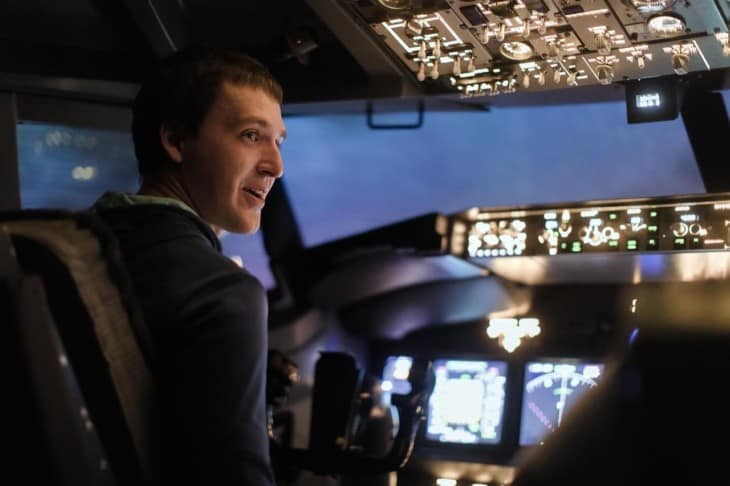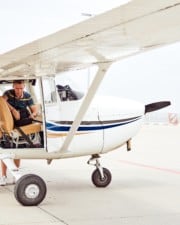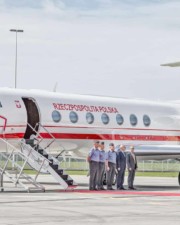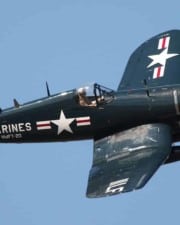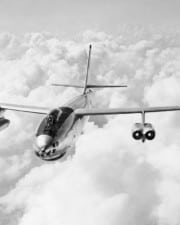The numbers vary from year to year and from flight school to flight school, but it is generally said that about 80 percent of students pilots drop out before they get their pilots licenses. So what happens to those 80 percent of students?
The reasons students succeed or fail at flight training are varied. Everyone is taking to the sky for different reasons and with different goals. Understand that continuing your flight training is about your own motivation, which may change over time. It is also something entirely personal and unique to yourself. Here are seven common reasons that students throw in the towel.
How Many People Drop Out of Pilot Training? The Statistics
First, let’s look at some numbers to see if these oft-repeated internet rumors hold any water. The FAA publishes annual civil airmen statistics showing how many pilots apply for each certificate grade. According to the latest information, the FAA issued 50,874 student pilot certificates in 2021. Of that, roughly 44 percent got a private pilot certificate.
But this is an incomplete picture. A majority of beginners never get a student pilot certificate. It’s not required until a student solos, and many don’t make it that far. That very first phase of flight training is intense and difficult.
The 80 percent number was widely reported around 2011 when the Aircraft Owners and Pilots Association commissioned a study of precisely why some students don’t become pilots. This research, now over ten years old, was used to help flight schools and instructors better understand how they could meet their student’s needs.
Of the many factors the study revealed, AOPA found that the cost of flight training alone was not a significant driver in why student pilots dropped out. Instead, the perceived value of the lessons and the quality of instruction received were some primary motivators for students.
What Obstacles Do Pilots Face During Training? 7 Examples

1. Lost Motivation or Confidence
Regardless of the subject matter, it is a basic tenant of education that a student must want or need to learn the material. The number one reason students quit flight training is that they lose the motivation to continue.
There are endless reasons why a student may find their motivation waning, from a lack of family support to a hair-raising experience in the plane.
It’s also normal for some students to lose their motivation to fly as they learn more about it. Maybe flying isn’t what they thought it would be, or after learning more about the career path, they decided that it isn’t for them after all. Maybe something else in their life is taking the time they planned on dedicating to flying, so they need to put flying on the back-burner for a while.
If you’re a student pilot struggling to get through, it’s important to focus on why you are doing it. Have clearly defined goals in your training and your life as a pilot. Clear goals will help you focus on why you’re doing this difficult thing–spending the time, money, and effort to get a pilot’s license.
2. How Hard is Flight School? Pretty Hard
There’s no sugar-coating it–getting a pilot’s license requires a lot of work. It will require a higher level of learning than any other academic task you have ever done.
Yes, there is a ton of bookwork. But you will also be expected to learn the material so well that you can explain it to an expert. When was the last time you took a one-on-one oral exam in school? Probably never.
To make matters worse, the topics covered during pilot training are so varied that no one can claim to be interested in all of them. But no matter how boring aerodynamics, engine systems, or medical factors are, you’ll be tested on them with the same rigor.
It’s pretty normal for students to get overwhelmed at some point during training. The quicker the pace of training, the more often it happens. The average time to complete a private pilot certificate is between one and two years. It will be even more difficult if you’re trying to do it in months. It takes time to digest all of that information.
3. Something’s Wrong – Wrong Instructor or Wrong School
Sometimes, it’s not you. You might have the wrong instructor. You might be in the wrong type of program. Not only that, but you might even be at the wrong flight school.
Instructors and students have a close working relationship. A good flight instructor is much more than a CFI, they’re also your coach and mentor in the aviation world. If your instructor’s teaching style or personality grates on you and makes learning difficult, you need a different instructor.
As uncomfortable as this situation makes students, it’s fairly common. Everyone involved–students, instructors, and flight school managers–knows that not every student can work with every instructor. Instructor changes are part of the job, and so long as you approach it professionally, no one will think twice about you requesting a change.

The same can be said for flight schools. Each school has its own culture and caters to certain types of students. Some schools train the next generation of airline pilots with airline-style curriculums and fast “drinking from the fire hose” training. If you’re a weekend warrior looking for a fun and relaxed experience, you won’t find it at this kind of school.
4. Dealing with Plateaus and Failures
Learning plateaus are a normal part of training. They occur when you seem to level off and can’t make any forward progress in your training. Usually, they last a lesson or two, but sometimes longer. The longer they last, the more frustrating they can become.
One such time is right before your first solo flight. It’s so common for students to get stuck in this phase of flight training that instructors call this the “solo plateau.” Students need to know that this is normal for nearly every flight student and not get overly frustrated or worried about it.
Failing progress checks or checkrides is another type of failure that students must anticipate and be able to handle. Practical tests are not everyone’s forte, and the private pilot training may be the first time you’ve ever taken one.
5. Failure to Take Command
Here’s a common issue students have that sometimes causes a solo plateau. Ask yourself this: Can a student who passes every knowledge test and does the pre-planned maneuvers correctly every time still not be ready to solo?
The answer is yes. From the view of the CFI, handing over the keys to the aircraft is a huge responsibility. To prove that you’re ready, you need to do more than just repeat the maneuvers and material–you need to show them that you’re ready to take command.

Your solo flight is the first logged Pilot in Command (PIC) time in your logbook. Once you’re alone in the plane, you’re in charge no matter what happens. To be ready for that responsibility, your instructor needs to know that you’re thinking ahead, asking the right questions, noticing the right discrepancies, and taking positive actions during the flight to ensure a safe outcome every single time.
That might sound daunting as a beginning flight student. More than likely, you have proven these things to your instructor by the time you’ve reached the solo lessons. But some students struggle with this, and it’s something you should consider as a student. Am I ready to take command?
6. Money Trouble
We all know that flying is expensive, but many students are unprepared for the real cost. It’s common practice for flight schools to present prospects with their hourly rates and a list of FAA minimum times. For example, the FAA minimum time for a Part 61 Private Pilot applicant is 40 hours in the aircraft.
But what they fail to mention is that very few people complete the program in 40 hours. In fact, the average time to complete the private is more like 70 or 80 hours–double the minimum. And that’s an average, which means that half of the students take even longer than that.
What’s more, some schools fail to mention how much ground instruction you will require. You can reduce this greatly with independent studying and getting your knowledge exam done ahead of time, but you’ll still need to pay for pre-and post-flight briefings and oral exam preparation.
Even when you know all of this, your motivation to spend more money can wane quickly when faced with a learning plateau or other setback. Imagine paying $300 or $400 for each flight lesson but still not seeming to progress closer to the end. It’s frustrating and demotivating.
7. Medical Issues and Quitting Flight School
Getting a medical certificate can be a hold-up for some students. If you can’t get a normal medical to fly, chances are you can still get a waiver from the FAA for your condition. Sometimes, it may require extra paperwork or a change in your medications if you take any. But very few conditions preclude you from getting a third-class medical for private flying.
Things are different if you plan to go on to a career in aviation. If your ultimate goal is a first-class medical for an Airline Transport Pilot certificate, you should start there and work out any paperwork issues early on. Likewise, you may discover that a spotty driving record might cause problems for a career as a pilot.
During training, some issues pop up that you might not have been aware of. For example, some students discover they get airsick easily. While this usually passes after a few flights, some students get worse.
Related Posts
